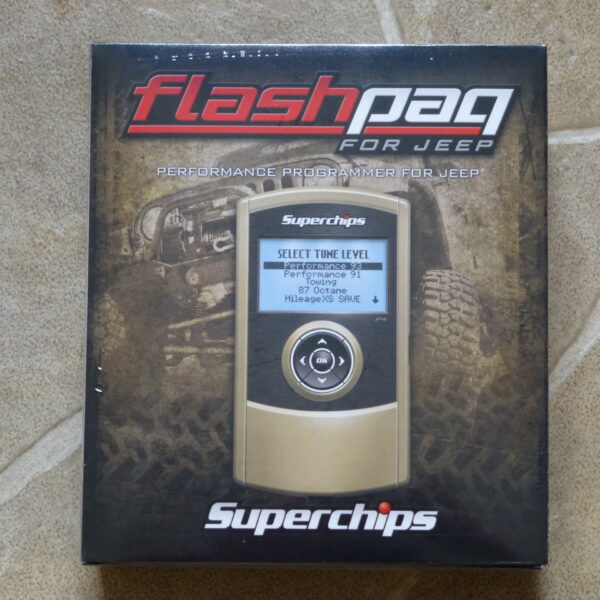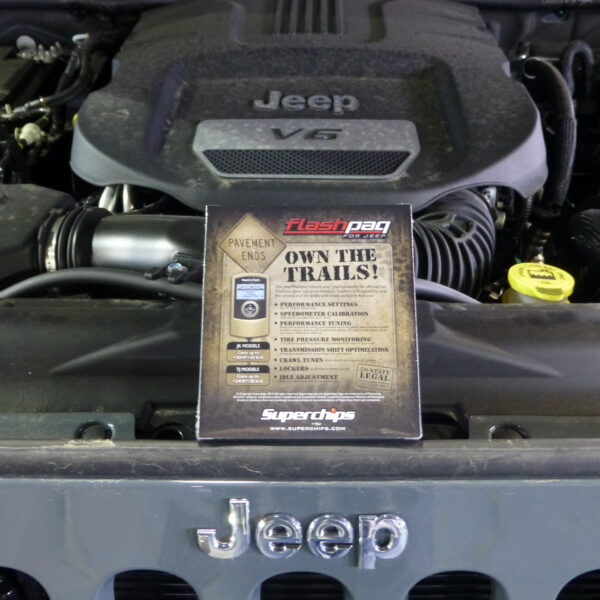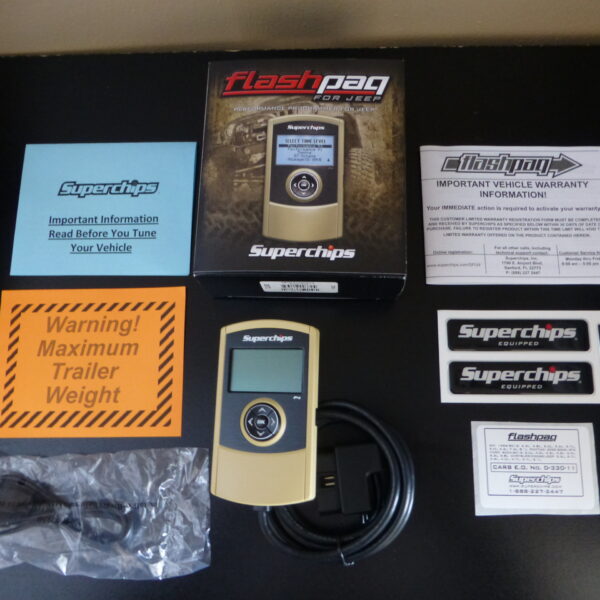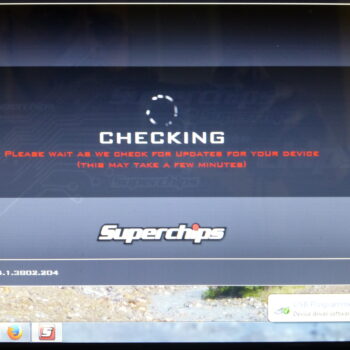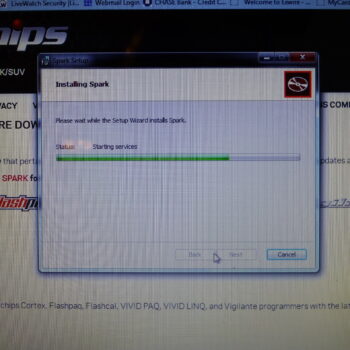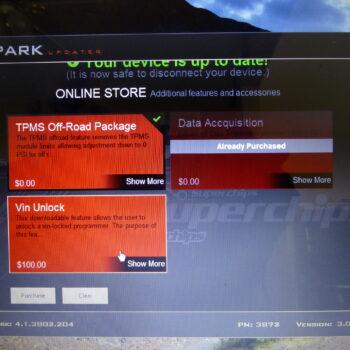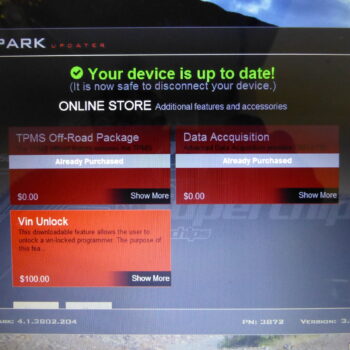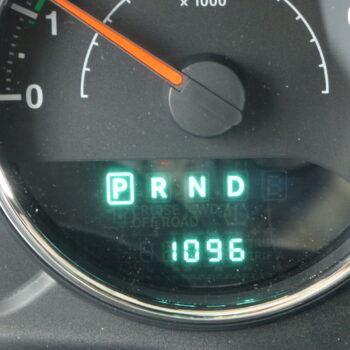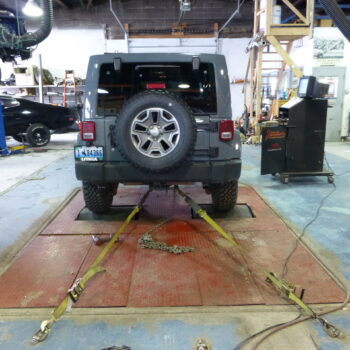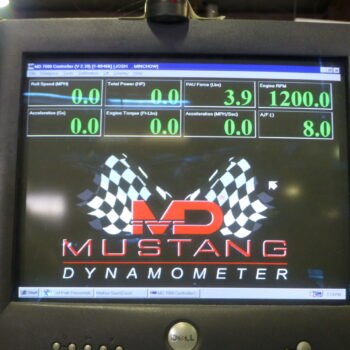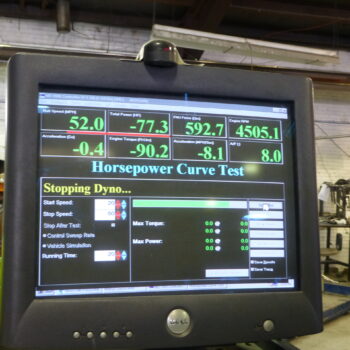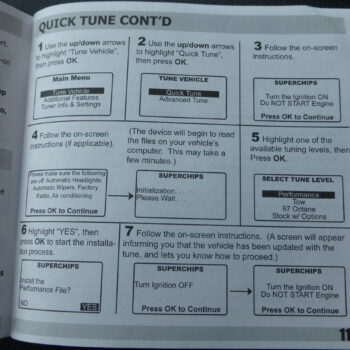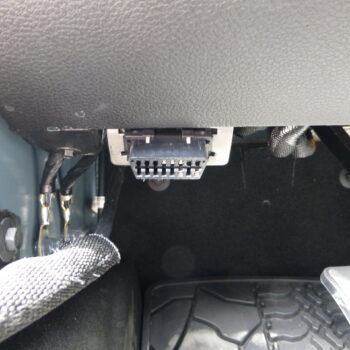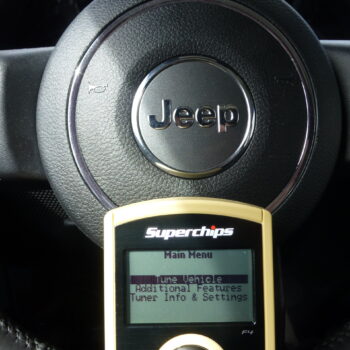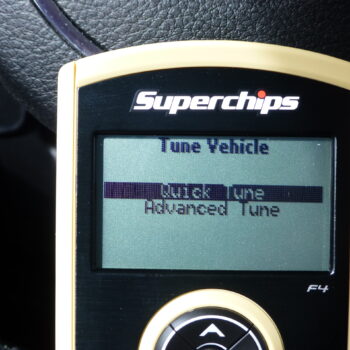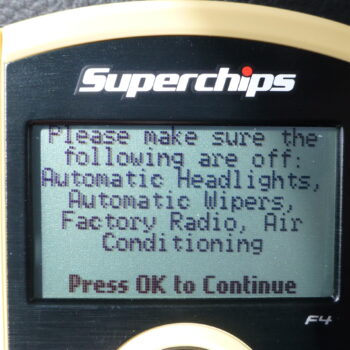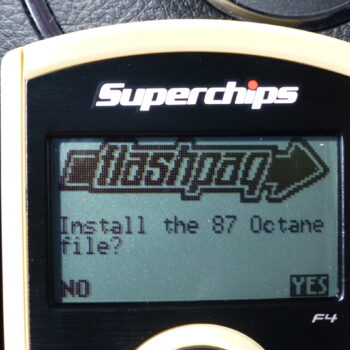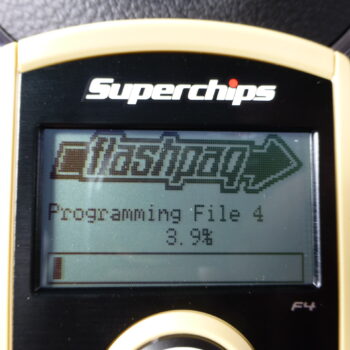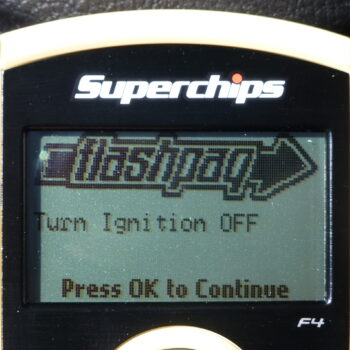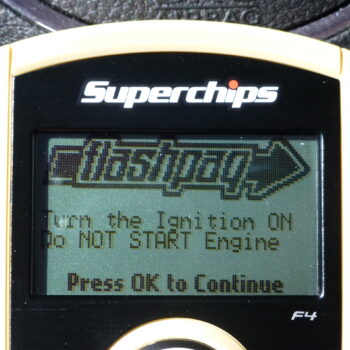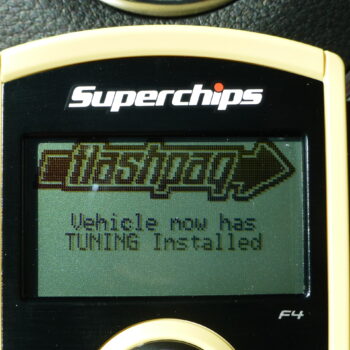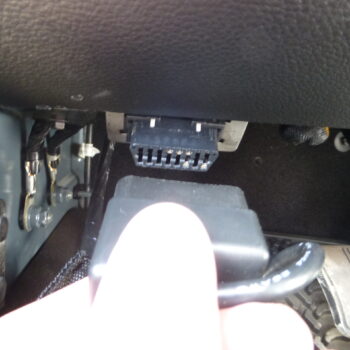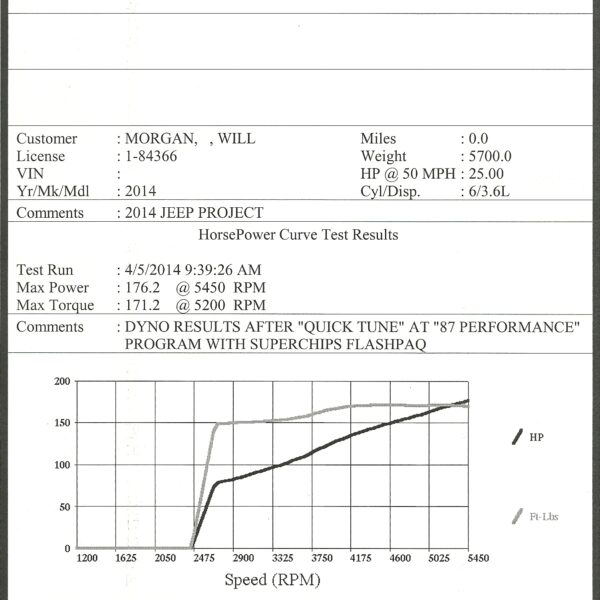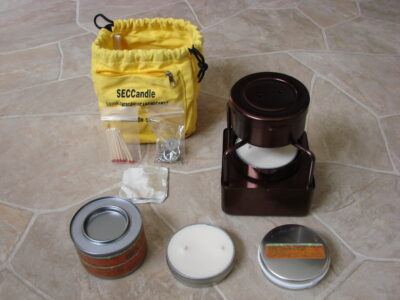Purchasing a new vehicle often leads to thoughts of “how can I get better fuel economy and maybe even a little more power”. Here is where you hear the primal grunting of Tim the Tool man Taylor, “uhr uhr uhr”. For the most part we’re men and we want more, more power and more economy if possible. If we have to give up one for the other, most of us will choose to keep any extra power even at the cost of fuel economy. In many cases to achieve one we fear we have to give up the other, not so in all cases.
With advances in technology there are more and more computers added to the most basic vehicle platforms. Superchips product line and more specifically the Flashpaq, allow us the ability to tune the computer system for extra performance, fuel economy and a slew of other great options sure to impress Jeep owners. So many states have different emissions and regulatory controls the factory settings may not always be exactly where we want them to be but there is hope. With the simple installation of a chip or programming with the Flashpaq we’re able to see some pretty impressive improvements and calibration capabilities not to mention diagnostic capabilities.
Superchips has been in the industry for thirty years so we went to them knowing they have the experience and background with this kind of technology. Since this Jeep will soon be getting a lift kit and over sized tires our testing will be a multipart review. During the initial phase we plan to program the stock Wrangler to see what the difference in fuel economy will be, we will post the before and after results as well as the stock rear wheel torque and horsepower. The second phase will include an exhaust system and the option of the higher octane tuning. The final part of the second phase will allow us to use the same Flashpaq to recalibrate the system for the larger tires and gearing after the lift is added. This will allow us to adjust transmission shift patterns, calibrate the speedometer and several other tuning capabilities that we will try to take advantage of.
Before you attempt to program your vehicle it is recommended that you check for any updates there might be for your vehicle. The folks at Superchips have made it simple to plug and update your programmer if there are currently updates available. All you have to do is register your Flashpaq online and plug it into your computer or Mac using the supplied USB cable. Follow the onscreen instructions for any updates or additional content that may be available and you’re ready to go.
Stock Statistics “Before”:
To begin we were looking to see just how much we could improve the fuel economy since the Jeep Wrangler isn’t the most efficient commuter on the road. All of the “Before” stats were taken from the stock platform and in the first 1,000 miles, no alterations were made before the testing. The fuel used in the first 1,000 miles was 87 Octane.
- Fuel Mileage: 17 MPG this average is from the first 1,000 miles the Jeep was driven.
- Horsepower: The rear wheel Dyno peaked at 170.91 @ 5450 RPM.
- Torque: The rear wheel Dyno peaked at 168.07 foot pounds of torque @ 4700 RPM.
Once you have performed all of your updates all you have to do is connect the Flashpaq with the supplied cable to your OBDII port and begin the programming process. Follow the onscreen instructions; it walks you through the install step by step. For this phase we will be doing a “Quick Tune” at the 87 Octane setting and posting our results.
Stock Statistics “After”:
- Fuel Mileage: 17.4MPG – 20.7 MPG this is after the 87 Octane programming was done and the Jeep was driven another 300 miles for testing in city and on highway.
- Horsepower: The rear wheel Dyno came in at 176.2 @ 5450 RPM.
- Torque: The rear wheel Dyno came in at 171.2foot pounds of torque @ 5200 RPM.
Something that impressed us the most was the ease of use. It took us roughly twenty minutes of reading instructions and applying that to practice and we were done. Yes, a simple twenty minutes for an extra 1-3 MPG plus a little extra horsepower and torque (on the low octane setting) well worth it in our eyes!
We didn’t see a huge difference on the initial testing for the HP or torque but we did see gains in all aspects of what we are testing and had hoped for. As stated; we will continue testing this with the higher octane options and hope to see a little more power and torque. We know we’re going to see the benefits of this product after we change the tires, gearing and other items related to the build that will affect everything from the speedometer calibration to the transmission shift patterns. Down the road if we need to diagnose anything we now have the tool to do so.
We would like to note a few items of pertinent information related to the test and our results.
Our testing was done at an elevation of 5,123 Ft. We used a Mustang MD-1750 Series Dyno, this is a rear wheel Dyno which is a “Loading Dyno” putting the load of the vehicle weight through an “Eddy Current Brake” to simulate real world load conditions. During the testing the Dyno was loaded to 5,700 pounds (the vehicle weight of this Jeep) and does not reflect any corrections, SAE numbers or elevation adjustments. For more information on Mustangs MD-1750 Series unit please visit their website at http://www.mustangdyne.com/mustangdyne/products/chassis-dynamometers/2wd/?prod=MD-1750+Series
We would like to thank the crew at Jardines Header Palace in Casper, Wyoming. Jardines did the Dyno testing for us and will be building the custom exhaust for this project. These guys have been instrumental in this project and we can’t thank them enough, if you’re in need of exhaust or other type of vehicle work we highly encourage you to check them out at http://www.jardineheaders.com/ or call them at (307) 234-6499.
For information on any of Superchips product line check them out at http://superchips.com/
Check back to see how we use the Superchips Flashpaq after the build…

